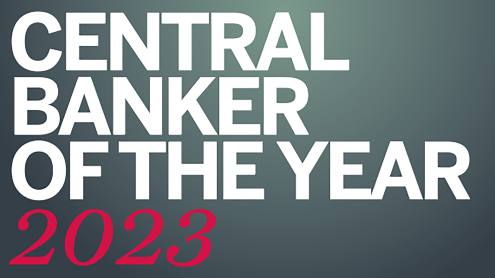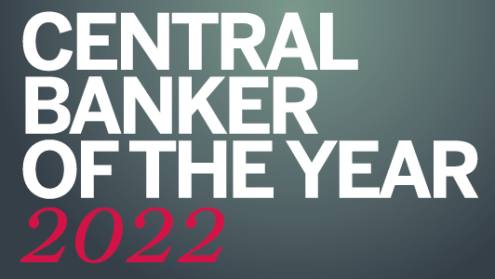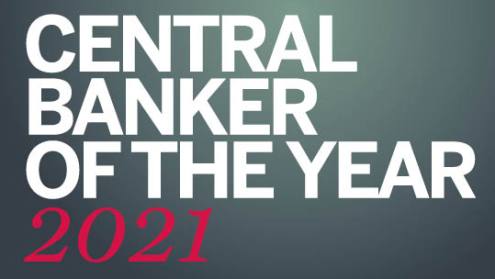Central Bank Governor for Asia: Ishrat Husain, Governor, State Bank of Pakistan
Dr Ishrat Husain is The Banker’s Central Bank Governor of the Year for Asia for his leadership at the helm of the State Bank of Pakistan (SBP) that has championed and driven the reform and restructuring of Pakistan’s financial sector. The IMF observes that these reforms have resulted in a more resilient and efficient financial system that is better placed to absorb significant macroeconomic shocks.
More than that, the SBP has progressively improved its capacity to manage and maintain macroeconomic stability. Inflation is at a six-year high and could end the fiscal year in June 2005 at 7.5%, 250bp above target. Yet the SBP believes price pressures are not severe. In response, it has been measured in its monetary tightening, acting cautiously to avoid squeezing output growth, which is expected to be more than 6%.
Pakistan has transformed its largely state-owned and weak banking system into a healthier, primarily privately owned system. This has been facilitated by restructuring major banks, ongoing consolidation, strengthening regulatory capacity, and improvements in transparency, corporate governance and credit culture. As a result, the quasi-fiscal responsibilities of financial institutions have been reduced sharply.
The reform efforts are reflected in improving financial soundness indicators, greater resilience to credit, market and liquidity risks, and good compliance with international supervisory standards. Pakistan’s financial sector is now more competitive and relatively efficient; the array of financial instruments available for various types of transactions in the market has widened; the financial infrastructure has strengthened; and the regulatory and supervisory functions of the SBP have improved.
Dr Husain says the financial sector reforms should be seen in the context of the overall turnaround in the macroeconomic environment. Growth is strong; inflation is low; the current account is in surplus; interest rates have fallen; exports are rising; reserves are up; and the country’s debt position has improved considerably.
“By all measures, it has been a very impressive turnaround in the economy. The reforms in the financial sector have been the most significant and more important in achieving this,” says Dr Husain.
Brazil’s economy expanded at its fastest pace in eight years in the third quarter of 2004, up 6.1% on the same quarter a year ago and faster than the 5.6% recorded in the second quarter. Having dipped into recession in 2003, the economy is firmly in recovery mode.
Central Banker of the Year for the Americas: Henrique de Campos Meirelles, governor of the Banco Central do Brasil
President Luiz Inácio Lula da Silva told reporters he was optimistic that South America’s largest economy was on a path of sustainable growth, a belief that many economists share. Successfully managing the business cycle is the job of Henrique de Campos Meirelles, governor of the Banco Central do Brasil, the country’s central bank. His transparent and responsive approach to monetary policy wins him The Banker’s title of Central Banker of the Year for the Americas.
Indeed, growth in the third quarter benefited from interest rates more than 700bp lower than a year earlier, boosting demand for credit. But, as readily as he has cut rates, Mr Meirelles has not hesitated to raise them. Since last September, the central bank has raised the benchmark overnight rate 125bp to an 11-month high of 17.25% in a bid to slow inflation. For the 12 months to the end of October 2004, Brazil’s inflation was 6.9%, up from 6.7% in September and quicker than the government’s year-end target of 5.5%.
Despite the typically long transmission lag between rate hikes and their effects on the real economy, there are already signs of a modest slowdown. Mr Meirelles is undeterred, arguing that an unwavering commitment to keeping inflation in check will help to attract investment, which in turn will fuel growth without price rises.
“The moment the economy is predictable, investments come,” he told Bloomberg last November. “If every investor feels confident, we will keep growing within our capacity, then they will feel confident to invest more.” Mr Meirelles believes that, even at current levels, Brazilian borrowing costs remain low enough to keep the economy growing.
Economists have generally welcomed the interest rate hikes, saying they will not inhibit growth or investment but will work to cool demand and avoid production bottlenecks. Growth of 3.5% is forecast in 2005, a level that is unlikely to trigger significant inflationary pressure.
Central Bank governor of the year for Africa and Middle East: Tito Mboweni , Governor, South African Reserve Bank
South Africa’s economy is accelerating and confidence is booming. In the third quarter, output was up 5.6%, the fastest pace of expansion in eight years. Since 2003, the Reserve Bank – the central bank – has cut interest rates on its key overnight rate to banks by 600 basis points (bp) to 7.5%, stimulating vigorous retail sales and a surge in property prices.
Reserve Bank governor Tito Mboweni’s success has been to read the inflation signals correctly, announcing monetary policy changes that have so far proved spot on despite the one to two-year transmission lag between adjusting interest rates and the impact of the adjustment on the real economy. A surprise 50bp cut in August has won favour with the markets as inflation forecasts remain benign.
South Africa is targeting inflation, aiming to hold price increases to within 3%-6%. Despite a 37% collapse in the value of its domestic currency, the rand in 2001 – which caused inflation to spike at 11.3% in 2002 – Mr Mboweni remained resolutely committed to put a brake on price rises, hiking interest rates 400bp. The economy took a hit, with growth slowing sharply. However, the wider interest rate differential between South Africa and developed markets attracted portfolio capital, a trend that was enhanced as global commodity demand rose, strengthening commodity currencies such as the rand. The stronger rand has hurt exports – 40% of exporting manufacturers say it is no longer profitable to export goods – but it has also insulated the economy against the inflationary impact of higher oil prices.
The Reserve Bank is adamant that it does not and will not influence the level of the currency, a hard lesson that it learnt in 1998 when an attempt to defend the currency incurred a massive forward dollar liability, which was only closed out in 2005, and had exerted downward pressure on the rand in the intervening period. However, the bank argues that the strengthening currency has had an “involuntary monetary tightening” effect, reducing external demand for exports and consequently being a mitigating factor in favour of monetary relaxation.
The bank has also been actively buying dollars in the open market, on an opportunistic and inconspicuous basis, to boost the country’s meagre foreign reserves – a vulnerability that is frequently noted by ratings agencies. In November (the latest period for which data is available) dollar-equivalent reserves rose 14% to about four months’ worth of imports.
Although dollar purchases should theoretically weaken the rand, traders were more taken with the better structural underpinnings of the currency – namely more reserves – pushing the rand into a stronger territory.






